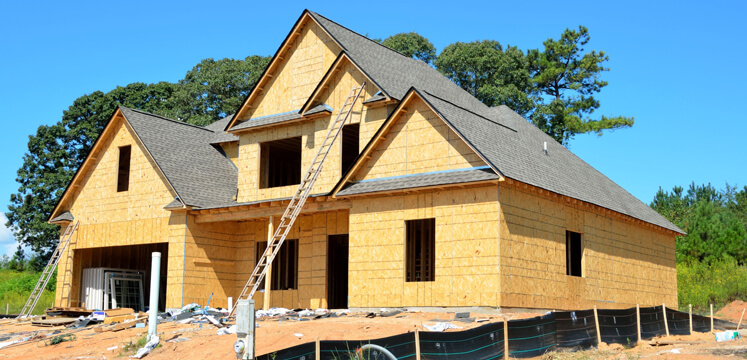Soil Composition and Your Home’s Foundation

You have probably heard that a house must be built on a solid foundation, but did you know that what’s underneath that foundation is equally if not more important? Different geographic areas have different types of soil, and some are better suited to building than others. Some soil compositions can shift and crumble around a home, and that can cause issues for the structure. Now, you can’t always control what type of soil your house is built on – but when you understand the kind of soil that you are dealing with, you will be better prepared to protect against potential problems that may be associated with that type of soil.
Here are the most common types of soil and what you need to know about them.
Clay
Clay soil does not drain well. During the spring when there is a large amount of rainfall, puddles can remain for a long time as the soil becomes saturated with water. When the weather is dry, clay tends to contract and crack. Clay soil may result in a home’s foundation shifting as the soil expands and contracts. Homeowners should also take measures to ensure water is drained away from their home as clay tends to hold on to water.
Rock
Various types of rock such as limestone, bedrock and sandstone can be good for building on because of the support and stability that they provide. It is a good option for foundations provided that the rock is level.
Like clay, rocky soil can expand or contract depending on the weather. Rocky soil can be a problem for homes that are built on slopes because it makes the house more prone to sliding. In this scenario, it is recommended that you contact a foundation expert to determine whether additional bracing for your home’s foundation might be required.
Sand
Unlike the first two types of soil, you do not have to worry about the soil contracting or expanding if it is mostly comprised of sand. Sand is not without its challenges, however. The main issue you are likely to face with sand is improper drainage. If this happens, water may get around and underneath your foundation which can result in erosion. This can lead to your foundation shifting. Signs of an eroding foundation including cracks in walls and doors and windows becoming challenging to open.
Loam
Loam is the ideal soil composition for building. It is a mix of different types of soil including clay, sand and silt. The advantage of loam is that is does not change significantly during different types of weather. The properties of loam are quite well balanced, especially in regards to how it holds and drains water.
If you have any concerns about the soil composition around your home and think you may need to take preventative measures – or if you believe there is already an issue that needs to be addressed, contact Conterra Foundation today.